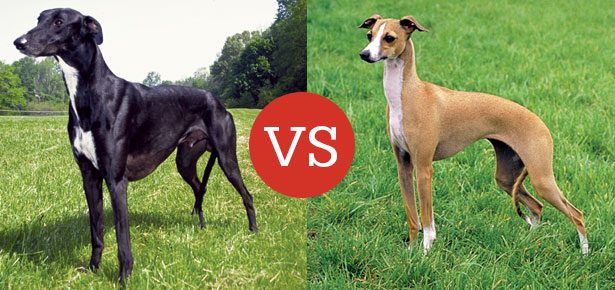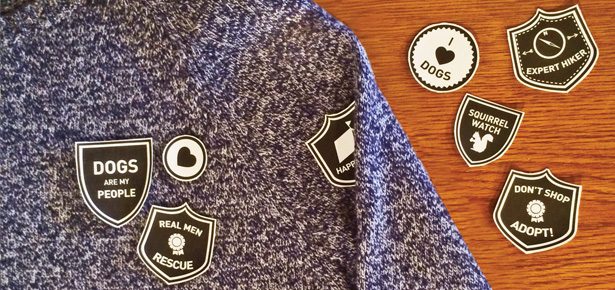

Dancing with the Canine Stars
Why foxtrot with a person, when you can limbo with a Labrador?
THE CROWD IS PACKED TEN DEEP, STANDING AROUND AN empty, roped-off arena.
At ringside, a gleaming Doberman waits by his handler’s side, wearing a rhinestone studded collar. The handler is wearing a flashy scarlet dress of satin and sequins, above the-elbow-length red gloves, and rhinestone jewelry.
"Christine Hughes and Faust!" announces the MC, and the team steps briskly to the centre of the ring. They take their starting position, back to back, the woman, hands on hips, striking a coquettish pose.
The music starts and the team begins dancing to Marilyn Monroe’s "Diamonds are a Girl’s Best Friend." The Doberman turns, side-steps, backs up, weaves through his handler’s legs, spins, and promenades in time with his partner. They have rehearsed for hundreds of hours to perfect this routine.
The dance ends with a flourish and the team bows, side by side, to rousing applause. Exiting the ring, the handler hugs her dog with tears in her eyes.
Canine freestyle is a sport that combines the precision of dog training with the exuberance of dance. In many ways, it resembles figure skating: in a high-level routine, music, choreography, costumes, disciplined moves, and emotional interpretation create a theatrical experience that audiences adore.
Many of the uninitiated scoff at the thought of dancing with dogs and yes, there is undeniably an element of the ridiculous to the sport, what with the inter-species dance team, tux-and-tailstype matching outfits and song choices like "Putting on the Ritz," but, as any attendee will attest, there is something both compelling and strangely moving about the performances-not to mention supremely entertaining.
Diane Kowalski doesn’t feel the least bit conflicted about her sport, and never has. Canine freestyle (CF) captured her interest immediately. Even before getting involved, she was intrigued with the creativity of the sport.
Kowalski is a professional competitor and instructor of canine sports. She started training for CF in 1999 and competed for the first time in 2000. She’s quickly risen to the top of the sport. In 2002 and 2005, she was named "Trainer of the Year" by the World Canine Freestyle Organization (WCFO), one of the largest CF organizations in the world, and at the 2006 U.S. Nationals she received a trophy for "most bonded" team.
In her view, dogs benefit immensely from involvement in CF. "[They get] mental and physical stimulation-exercise, strength, flexibility. Dogs are kept active and use all of the muscles in their bodies," says Kowalski.
The top-ranked trainer is currently competing with three dogs: two Border Collies and one Briard. Each has a distinct temperament, with the Briard, Mrs. Beasly, being the most headstrong.
According to Kowalski, training dogs for this sport can also benefit the human half of the team. "It has helped me to develop a better awareness of how dogs think and learn, and to be more sensitive to what dogs need to be successful."
Success at CF can only be realized through a lot of hard work and practice. A championship-level routine is characterized by attention to detail, says Kowalski. "The handler knowing the routine and music well; the dog understanding every single move and behaviour, and performing precisely; the routine being choreographed so that it flows well and it’s easy for the dog to go from one behaviour to the next; music selection that is comfortable for the team to work with, [and] costuming that is appropriate, comfortable, and reflects the artistry of the piece."
It’s no surprise that competing at the top level requires a big investment in time. The handler works on the routine independent of the dog, but there are still four or five training sessions with your partner every week.
Once the dog knows basic obedience commands such as heel, sit, stay, down, and come, the team can begin work on typical individual freestyle moves that include heeling on the right side instead of the left, spinning, backing up, moving sideways, weaving through legs, jumping, fetching objects, and bowing. After that, the dog must still learn the actual routine- performing the moves in sequence, in particular places at specified moments, with the added distractions of music, crowd, and unfamiliar venues.
Competing at an elite level can also involve a financial investment. Gail Walsh is President of Paws 2 Dance (P2D), an association based out of Surrey, British Columbia, with Canadian and American members. She estimates that a person taking lessons from a top trainer, entering a couple of competitions per year, and traveling for demonstrations or seminars might be spending $2,000 to $3,000 a year on the sport. But you can enter the sport inexpensively, she stresses.
"If you want to train on your own, make your own costumes, and just do demonstrations of the sport rather than competitions, it costs very little."
While P2D is a small club with just 28 members, it was started by Ray Underwood, one of the founders of North America’s first freestyle club back in 1991, Musical Canine Sports International (now defunct). As with many sports, different governing organizations exist. There is no worldwide, single authority on the sport, says Walsh. According to her, the various clubs and associations approach the sport from slightly different angles.
"It’s hard to say which organization’s titles have the widest recognition, since each club has different standards on how to earn those titles. There are not only different standards but totally different views of how the sport should be performed. The titles earned in one club may mean nothing to someone who has had to work to a different standard in another club. Because of the differences in the sport, there is no true world champion."
While association rules and formats may vary, dogs that excel in the sport often have common characteristics, says Walsh: well-socialized; "proofed" to different environments, smells, and noises, and, above all, obedient. The dog should have the "desire to please his handler," she stresses.
P2D’s president can also make some broad statements about the typical competitor. She says that CF participants are usually middle-aged women. They have some disposable income and free time, often because their children are grown. "There are a few men and younger women in the sport, but very few," Walsh says.
Patie Ventre, founder and CEO of WCFO, sees another type of typical competitor- still a woman, but a family member, with kids who may follow her into the sport and even a husband who may develop an interest in competing. Where Walsh says competitors are typically middle class, Ventre stresses that they come from "all walks of life." As for the dogs, Ventre says they’re evenly split between mutts and purebreds and no breed dominates the sport. For example, Border Collies-recognized as excellent canine athletes, and certainly well-represented in CF-while intelligent, can be stubborn and anticipate commands, she says.
Ventre is a former public relations/ad agency owner with a background in dance and performance. She competed in skating through her teens and performed Latin and ballroom dancing in the 1980s. She now competes in CF with two breeds, Border Collies and a Chinese Crested-Papillon mix. With the former, she may perform to mamba, waltz, or contemporary music, such as Bette Midler or Stevie Nicks, while with the smaller dog, she puts the emphasis on cute, choosing songs such as "She’ll Be Coming Around the Mountain." At competitions, you will hear anything from polkas to country and western, she says. Some youngsters even use hiphop, although their music choice is subject to parental approval.
Props are allowed in WCFO competitions, as long as they are integral to the theme of the dance, not training aids. And while there are no required moves at any level, the way in which the handler can interact with the dog changes with more advanced divisions. For beginners, hand signals and cues are permitted, while at the most competitive levels, only verbal commands are permitted.
Ventre says the WCFO’s many divisions cater to competitors of all kinds. They have a senior class-Sassy Seniors-in which either the dog must be over nine years old or the handler must be over 65. They also have a Handi-Dandi class, for dogs and handlers with disabilities. In all classes, the dog must always be handled by its owner. The WCFO, says the founder, is "the largest organization governing the sport today," with more than 1,000 active members and a further four or five thousand that may be involved only in competing.
Despite the evident enthusiasm of those involved in the sport, it is often greeted by the unacquainted with derision, typically dismissed as the not-pretty collision of unskilled amateur dance with crazy dog enthusiasts, strutting about in flamboyant trappings, dragging their dogs along for the ridiculous ride. Whether that is true or not, freestyle events inevitably attract huge crowds and most viewers are spellbound by what they see.
Just what it is they see, more often than not, is a palpable bond between dog and handler-and a dog having the time of its life. ■
Join the newsletter and never miss out on dog content again!
"*" indicates required fields
By clicking the arrow, you agree to our web Terms of Use and Privacy & Cookie Policy. Easy unsubscribe links are provided in every email.





